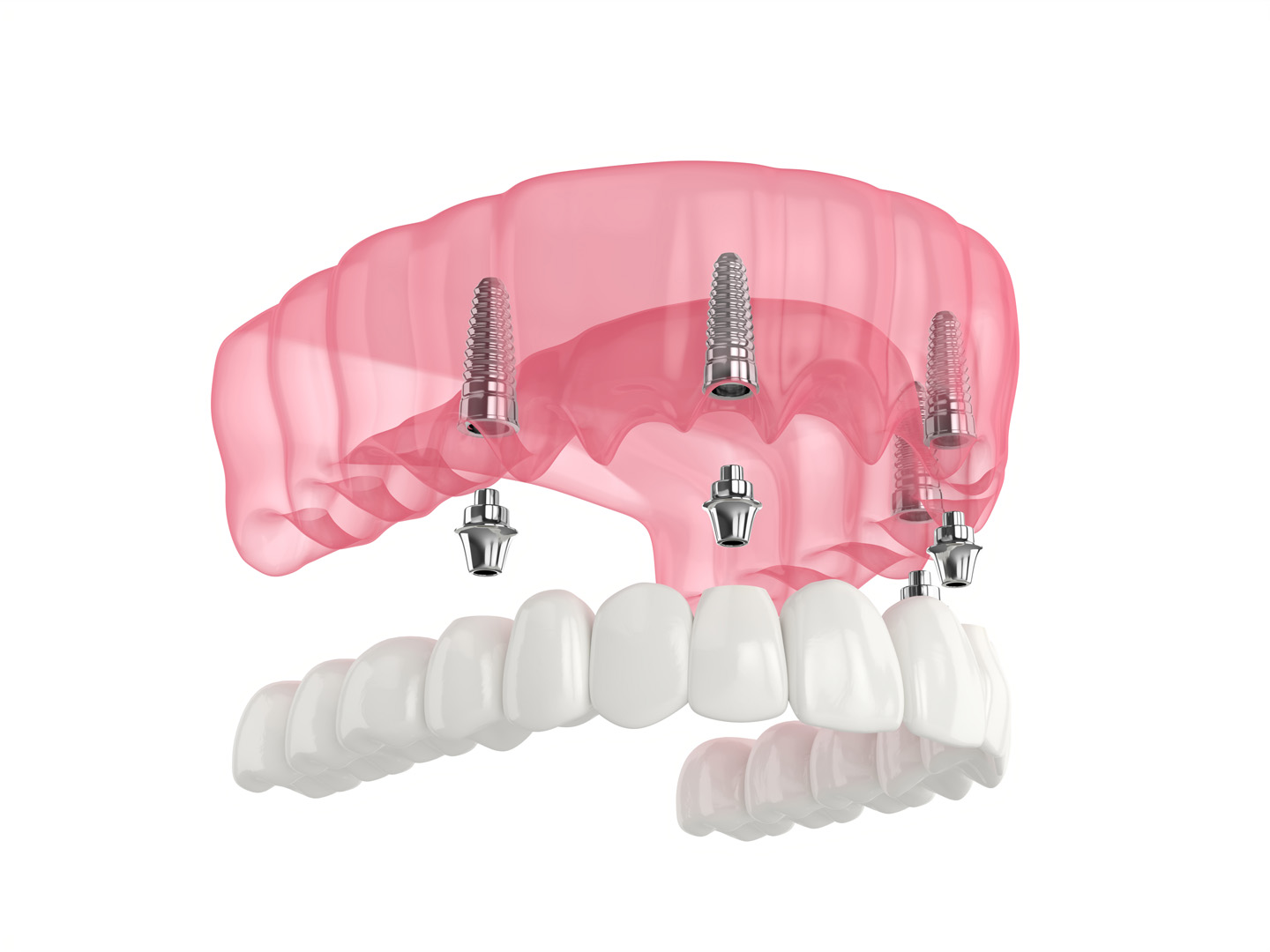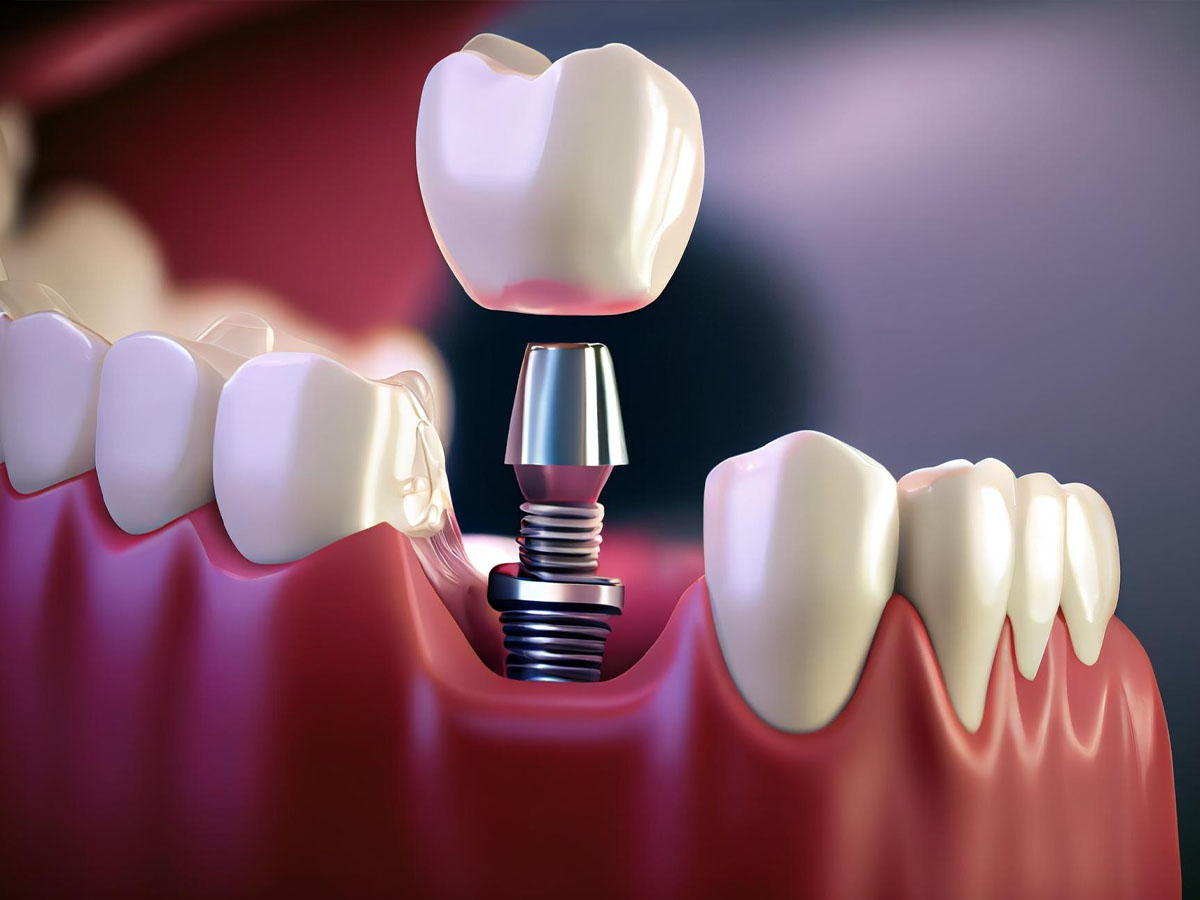When deciding on a dental restoration solution, understanding the differences between All-on-4 dental implants and traditional implants is crucial. Both options offer excellent results, but they cater to different needs and circumstances. This comprehensive guide highlights the key distinctions between the two, helping you make an informed decision about your oral health.
Overview of All-on-4 and Traditional Implants
What Are All-on-4 Dental Implants?
All-on-4 dental implants are designed to restore an entire arch of teeth using just four strategically placed titanium implants. This innovative technique often eliminates the need for bone grafting, making it a faster and more cost-effective solution for patients with extensive tooth loss.
For more details about the procedure, read “What Are All-on-4 Dental Implants and How Do They Work?”.
What Are Traditional Dental Implants?
Traditional implants involve placing individual titanium posts for each missing tooth or multiple posts to support a dental bridge. While highly effective, this method often requires more implants and additional procedures like bone grafting to ensure stability.
Key Differences Between All-on-4 and Traditional Implants
- Number of Implants Required
All-on-4: Uses four implants per arch, strategically placed to support a full set of prosthetic teeth.
Traditional Implants: Requires an implant for each missing tooth or multiple implants for bridges, often totaling 6-8 implants per arch. - Procedure Time
All-on-4: The prosthetic teeth are often placed on the same day as the implant surgery, earning it the nickname “teeth in a day.”
Traditional Implants: Typically requires multiple procedures over several months, including healing time between surgeries. - Bone Grafting
All-on-4: In most cases, bone grafting is not necessary due to the angled placement of the implants.
Traditional Implants: Bone grafting may be required if the jawbone lacks sufficient density, prolonging the treatment timeline. - Cost
All-on-4: Offers a cost-effective solution for restoring an entire arch, as fewer implants and procedures are needed.
Traditional Implants: Generally more expensive due to the higher number of implants and the potential need for additional surgeries. - Maintenance and Longevity
All-on-4: Provides a permanent, stable solution with proper care, lasting 20+ years.
Traditional Implants: Individual implants can also last decades but require separate maintenance for each unit.

Pros and Cons of All-on-4 Implants
Pros:
- Faster results with same-day teeth placement.
- Minimal need for bone grafting.
- Cost-effective for full-mouth restoration.
Cons:
- Not ideal for patients with certain medical conditions or insufficient jawbone density in key areas.
Pros and Cons of Traditional Implants
Pros:
- Suitable for replacing single or multiple teeth.
- Offers a high level of customization.
Cons:
- Requires longer treatment time.
- May involve more invasive procedures like bone grafting.
How to Choose Between All-on-4 and Traditional Implants
The right choice depends on your unique oral health needs, goals, and budget. Here are some factors to consider:
- Extent of Tooth Loss: All-on-4 is ideal for patients with significant or full-arch tooth loss, while traditional implants are better for replacing individual teeth.
- Bone Density: All-on-4 may be preferable if bone grafting is not an option or desired.
- Timeline: If you’re looking for quicker results, All-on-4 offers same-day teeth placement, whereas traditional implants require more time.
For additional insights, explore “Is All-on-4 Right for You? Ideal Candidates and Considerations“.

Conclusion
Both All-on-4 and traditional implants offer reliable, long-term solutions for missing teeth. By understanding their differences and consulting with a dental professional, you can choose the option that best fits your lifestyle and oral health goals. Whether you’re seeking full-arch restoration or a solution for individual teeth, the right treatment is within reach.















